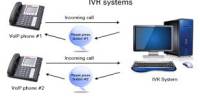Introduction
The utility industry across the world is trying to address numerous challenges, including generation diversification, optimal deployment of expensive assets, demand response, energy conservation, and reduction of the industry’s overall carbon footprint. It is evident that such critical issues cannot be addressed within the confines of the existing electricity grid.
The existing electricity grid is unidirectional in nature. It converts only one-third of fuel energy into electricity, without recovering the waste heat. Almost 8% of its output is lost along its transmission lines, while 23% of its generation capacity exists to meet peak demand only (i.e., it is in use only 5% of the time). In addition to that, due to the hierarchical topology of its assets, the existing electricity grid suffers from domino effect failures. The next-generation electricity grid known as the “smart grid” or “intelligent grid,” is expected to address the major shortcomings of the existing grid. In essence, the smart grid needs to provide the utility companies with full visibility and pervasive control over their assets and services. The smart grid is required to be self-healing and resilient to system anomalies. And last but not least, the smart grid needs to empower its stakeholders to define and realize new ways of engaging.
The Evolution of Tomorrow’s Technology
To allow pervasive control and monitoring, the smart grid is emerging as a convergence of information technology and communication technology with power system engineering. Figure 3.1 depicts the salient features of the smart grid in comparison with the existing grid.
Given the fact that the roots of power system issues are typically found in the electrical distribution system, the point of departure for grid overhaul is trimly placed at the bottom of the chain. As Figure 3.2 demonstrates, utilities believe that investing in distribution automation will provide them with increasing capabilities over time.
Within the context of these new capabilities, communication and data management play an important role. These basic ingredients enable the utilities to place a layer of intelligence over their current and future infrastructure, thereby allowing the introduction of new applications and processes in their businesses. As Figure 3.3 depicts the convergence of communication technology and information technology with power.
Smart Grid Drivers
As the backbone of the power industry, the electricity grid is now the focus of assorted technological innovations. Utilities in North America and across the world are taking solid steps towards incorporating new technologies in many aspects of their operations and infrastructure. At the core of this transformation is the need to make more efficient use of current assets. Figure 3.4 shows a typical utility pyramid in which asset management is at the base of smart grid development. It is on this base that utilities build a foundation for the smart grid through a careful overhaul of their IT, communication, and circuit infrastructure.
As discussed, the organic growth of this well-designed layer of intelligence over utility assets enables the smart grid’s fundamental applications to emerge. It is interesting to note that although the foundation of the smart grid is built on a lateral integration of these basic ingredients, true smart grid capabilities will be built on vertical integration of the upper-layer applications. As an example, a critical capability such as demand response may not be feasible without tight integration of smart meters and home area networks.
As such, one may argue that given the size and the value of utility assets, the emergence of the smart grid will be more likely to follow an evolutionary trajectory than to involve drastic overhaul. The smart grid will therefore materialize through strategic implants of distributed control and monitoring systems within and alongside the existing electricity grid. The functional and technological growth of these embryos over time helps them emerge as large pockets of distributed intelligent systems across diverse geographies.
This organic growth will allow the utilities to shift more of the old grid’s load and functions onto the new grid and so to improve and enhance their critical services. These smart grid embryos will facilitate the distributed generation and cogeneration of energy. They will also provide for the integration of alternative sources of energy and the management of a system’s emissions and carbon footprint. And last but not least, they will enable utilities to make more efficient use of their existing assets through demand response, peak shaving, and service quality control.
The problem that most utility providers across the globe face, however, is how to get to where they need to be as soon as possible, at the minimum cost, and without jeopardizing the critical services they are currently providing. Moreover, utilities must decide which strategies and what road map they should pursue to ensure that they achieve the highest possible return on the required investments for such major undertakings. As is the case with any new technology, the utilities in the developing world have a clear advantage over their counter- parts in the developed world. The former have fewer legacy issues to grapple with and so may be able to leap forward without the need for backward compatibility with their existing systems.
Evolution of the Smart Grid
The Existing Grid
The existing electricity grid is a product of rapid urbanization and infrastructure developments in various parts of the world in the past century. Though they exist in many differing geographic of the electrical power system, however, has been influenced by smart grid, the utility companies have generally adopted similar technologies. The growth economic, political and geographic factors that is unique to each utility company.
Despite such differences, the basic topology of the existing electrical power system has remained unchanged. Since its inception, the power industry has operated with clear demarcations between its generation, transmission, and distribution subsystems and thus has shaped different levels of automation, evolution, and transformation in each silo. As Figure 3.5 demonstrates, the existing electricity grid is a strictly hierarchical system in which power plants at the top of the chain ensure power delivery to customers’ loads at the bottom of the chain. The system is essentially a one way pipeline where the source has no real-time information about the service parameters of the termination points. The grid is therefore over engineered to withstand maximum anticipated peak demand across its aggregated load. And since this peak demand is an infrequent occurrence, the system is inherently inefficient.
Moreover, an unprecedented rise in demand for electrical power, coupled with lagging investments in the electrical power infrastructure, has decreased system stability. With the safe margins exhausted, any unforeseen surge in demand or anomalies across the distribution network causing component failures can trigger catastrophic blackouts.
To facilitate troubleshooting and upkeep of the expensive upstream assets, the utility companies have introduced various levels of command-and-control functions. A typical example is the widely deployed system known as supervisory control and data acquisition (SCADA). Although such systems give utility companies limited control over their upstream functions, the distribution network remains outside their real-time control. And the picture hardly varies all across the world. For instance, in North America, which has established one of the world’s most advanced electrical power systems, less than a quarter of the distribution network is equipped with information and communications systems, and the distribution automation penetration at the system feeder level is estimated to be only 15% to 23%.
Smart Grid Evolution
Given the fact that nearly 93% of all power outages and disturbances have their roots in the distribution network, the move towards the smart grid has to start at the bottom of the chain, in the distribution system. Moreover, the rapid increase in the cost of fossil fuels, coupled with the inability of utility companies to expand their generation capacity in line with the rising demand for electricity, has accelerated the need to modernize the distribution network by introducing technologies that can help with demand-side management and revenue protection.
As Figure 3.6 shows, the metering side of the distribution system has been the focus of most recent infrastructure investments. The earlier projects in this sector saw the introduction of automated meter reading (AMR) systems in the distribution network. AMR lets utilities read the consumption records, alarms, and status from customers’ premises remotely.
As Figure 3.7 suggests, although AMR technology proved to be initially attractive, utility companies have realized that AMR does not address the major issue they need to solve demand-side management. Due to its one-way communication system, AMR’s capability is restricted to reading meter data. It does not let utilities take corrective action based on the information received from the meters.
In other WordStar systems do not allow the transition to the smart grid, where pervasive control at all levels is a basic premise. Consequently, AMR technology was short-lived. Rather than investing in AMR, utilities across the world moved towards advanced metering infrastructure (AMI).AMI provide utilities with a two-way communication system to the meter, as well as the ability to modify customers’ service-level parameters. Through AMI, utilities can meet their basic targets for load management and revenue protection. They not only can get instantaneous information about individual and aggregated demand, but they can also impose certain caps on consumption, as well as enact various revenue models to control their costs The emergence of AMI heralded a concerted move by stakeholders to further refine the ever-changing concepts around the smart grid. In fact, one of the major measurements that the utility companies apply in choosing among AMI technologies is whether or not they will be forward compatible with their yet-to-be-realized smart grid’s topologies and technologies.
Transition to the Smart Grid
As the next logical step, the smart grid needs to leverage the AMI infrastructure and implement its distributed command and-control strategies over the AMI backbone. The pervasive control and intelligence that embodies the smart grid has to reside across all geographies, components, and functions of the system. Distinguishing these three elements is significant as it determines the topology of the smart grid and its con stituent components.
Smart Micro Grids
The smart grid is the collection of all technologies, concepts the smart grid is the collection of all technologies, concepts generation, transmission, and distribution to be replaced with an end-to-end, organically intelligent, fully integrated environment where the business processes, objectives, and needs all stakeholders are supported by the efficient exchange of data services, and transactions. A smart grid is therefore defined as a grid that accommodates a wide variety of generation options, e.g. Central, distributed, intermittent, and mobile. It empowers consumers to interact with the energy management system to adjust their energy use and reduce their energy costs. A smart grid is also a self-healing system. It predicts looming failures and takes corrective action to avoid or mitigate system problems. A smart grid uses IT to continually optimize the use of its capital assets while minimizing operational and maintenance costs. Mapping the above definitions to a practical architecture, one can readily see that the smart grid cannot and should not be a replacement for the existing electricity grid but a complement to it. In other words, the smart grid would and should coexist with the existing electricity grid, adding to its capabilities, functionalities, and capacities by means of an evolutionary path. This necessitates a topology for the smart grid that allows for organic growth the inclusion of forward-looking technologies, and full back ward compatibility with the existing legacy systems.
At its core, the smart grid is an ad hoc integration of complementary components, subsystems, and functions under the pervasive control of a highly intelligent and distributed command-and-control system. Furthermore, the organic growth and evolution of the smart grid is expected to come through the plug-and-play integration of certain basic structures called intelligent (or smart) micro grids. Micro grids are defined as interconnected networks of distributed energy systems (loads and resources) that can function whether they are connected to or separate from the electricity grid.
Micro Grid Topology
A smart micro grid network that can operate in both grid-tied as well as islanded modes typically integrates the following seven components. It incorporates power plants capable of meeting local demand as well as feeding the unused energy back to the electricity grid. Such power plants are known as cogenerates and often use renewable sources of energy, such as wind, sun, and biomass. Some micro grids are equipped with thermal power plants capable of recovering the waste heat, which is an inherent by-product of fissile-based electricity generation. Called combined heat and power (CHP), these systems recycle the waste heat in the form of district cooling or heating in the immediate vicinity of the power plant.
- It services a variety of loads, including residential, office and industrial loads.
- It makes use of local and distributed power-storage capability to smooth out the intermittent performance of renewable energy sources.
- It incorporates smart meters and sensors capable of measuring a multitude of consumption parameters (e.g., active power, reactive power, voltage, current, demand, and so on) with acceptable precision and accuracy. Smart meters should be tamper-resistant and capable of soft connect and disconnect for load and service control.
- It incorporates a communication infrastructure that enables system components to exchange information and commands securely and reliably.
- It incorporates smart terminations, loads, and appliances capable of communicating their status and accepting commands to adjust and control their performance and service level based on user and/or utility requirements.
It incorporates an intelligent core, composed of integrated networking, computing, and communication infrastructure elements, that appears to users in the form of energy management applications that allow command and control on all nodes of the network. These should be capable of identifying all terminations, querying them, exchanging data and commands with them and managing the collected data for scheduled and/or on demand transfer to the higher-level intelligence residing in the smart grid. Figure 3.8 depicts the topology of a smart micro grid.
Smart Grid Topology
As Figure 3.9 shows, the smart grid is therefore expected to emerge as a well-planned plug-and-play integration of smart micro grids that will be interconnected through dedicated highways for command, data, and power exchange. The emergence of these smart micro grids and the degree of their interplay and integration will be a function of rapidly escalating smart grid capabilities and requirements. It is also expected that not all micro grids will be created equal. Depending on their diversity of load, the mix of primary energy sources, and the geography and economics at work in particular areas, among other factors, micro grids will be built with different capabilities assets, and structures.
Coexistence of the Two Generations of Electricity Grids
As discussed earlier, utilities require that the AMI systems now being implemented ensure an evolutionary path to the smart grid. The costs associated with AMI rollout are simply too high to permit an overhaul of the installed systems in preparation for an eventual transition to the smart grid As such, industry pundits believe that for the foreseeable future the old and the new grids will operate side by side, with functionality and load to be migrated gradually from the old system to the new one over time. And in the not too distant future, the smart grid will emerge as a system of organically integrated smart micro grids with pervasive visibility and command-and-control functions distributed across all levels. The topology of the emerging grid will therefore resemble a hybrid solution, the core intelligence of which grows as a function of its maturity and extent. Figure 3.10 shows the topology of the smart grid in transition.
Smart Grid Standards
Despite assurances from AM technology providers, the utilities expect the transition from AMI to the smart grid to be far from a smooth ride. Many believe that major problems could surface when disparate systems, functions, and components begin to be integrated as part of a distributed command-and-control system Most of these issues have their roots in the absence of the universally accepted interfaces messaging and control protocols, and standards that would be required to ensure a common communication vocabulary among system components There are others who do not share this notion, however, arguing that given all the efforts under way in standardization bodies, the applicable standards will emerge to help with plug-and-play integration of various smart grid system components. Examples of such standards are ANSI C12.22 for smart metering and IEC 61853 for substation automation.
Moreover, to help with the development of the required standards, the power industry is gradually adopting different terminologies for the partitioning of the command-and-control layers of the smart grid. Examples include home area network or HAN (used to identify the network of communicating loads, sensors, and appliances beyond the smart meter and within the customer’s premises); local area network or LAN (used to identify the network of integrated smart meters, field components, and gateways that form the logical network between distribution substations and a customer’s premises); and, last but not least, wide area network or WAN (used to identify the network of upstream utility assets, including but not limited to power plants, distributed storage, substations, and so on).
As Figure 3.11 shows, the interface between the WAN and LAN worlds consists of substation gateways, while the interface between LAN and HAN is provided by smart meters. The security and vulnerability of these interfaces will be the focus of much various technological and standardization development in the near future.
Recent developments in the power industry point to the need to move towards an industry-wide consensus on a suite of standards enabling end-to-end command and data exchange between components of the smart grid. Focused efforts and leadership by NIST (United States National Institute of Standards and Technology) is yielding good results. NIST Framework and Roadmap for Smart Grid Interoperability Standards identifies priority areas for standardization and a list of standards that need to be further refined, developed, and/or implemented. Similar efforts in Europe and elsewhere point to the necessity of the development of a common information model (CIM) to enable vertical and lateral integration of applications and functions within the smart grid. Among the list of proposed standards, IEC 61853 and its associate standards are emerging as favorites for WAN data communication, supporting TCP/IP, among other protocols, over fiber or a 1.8-GHz flavor of WiMax. In North America, ANSI C12.22, and its associated standards, is viewed as the favorite LAN standard, enabling a new generation of smart meters capable of communicating with their peers as well as with their corresponding substation gateways over a variety of wireless technologies. Similarly, the European Community’s recently issued mandate for the development of Europe’s AMI standard, replacing the aging DLMS/ COSEM standard, is fueling efforts to develop a European counterpart for ANSI-C12.22.
The situation with HANs is a little murkier, as no clear winner has emerged among the proposed standards, although ZigBee with Smart Energy Profile seems to be a clear front-runner. This may be due primarily to the fact that on one hand the utilities in North America are shying away from encroaching beyond the smart meter into the customer’s premises while on the other hand the home appliance manufacturers have not yet seen the need to bur-den their products with anything that would compromise their competitive position in this price-sensitive commodity market. Therefore, expectations are that the burden for creating the standardization momentum in HAN technology will fall on initiatives from consumer societies, local or national legislative assemblies, and/or concerned citizens.
In summary, the larger issue in the process of transitioning to the smart grid lies in the gradual rollout of a highly distributed and intelligent management system with enough flexibility and scalability to not only manage system growth but also to be open to the accommodation of ever-changing technologies in communications, IT, and power systems. What would ensure a smooth transition from AMI to the smart grid would be the emergence of plug-and-play system components with embedded intelligence that could operate transparently in a variety of system integration and configuration scenarios. The embedded intelligence encapsulated in such components is often referred to with the term intelligent agent.
Smart Grid Research, Development, and Demonstration (RD&D)
Utility companies are fully cognizant of the difficulties involved in transitioning their infrastructure, organizations, and processes towards an uncertain future. The fact of the matter is that despite all the capabilities the smart grid promises to yield, the utilities, as providers of a critical service, still see as their primary concern keeping the lights on.
Given the fact that utilities cannot and may not venture into adopting new technologies without exhaustive validation and qualification, one can readily see that one of the major difficulties utilities across the world are facing is the absence of near-real world RD&D capability to enable them develop, validate, and qualify technologies, applications, and solutions for their smart grid programs. The problem most utility providers’ face is not the absence of technology. On the contrary, many disparate technologies have been developed by the industry (e.g., communication protocols, computing engines, sensors, algorithms, and models) to address utility applications and resolve potential issues within the smart grid.
The problem is that these new technologies have not yet been proven in the context of the utility providers’ desired specifications, configurations, and architecture. Given the huge responsibility utilities have in connection with operating and maintaining their critical infrastructure, they cannot be expected to venture boldly and without proper preparation into new territories, new technologies, and new solutions. As such, utilities are in critical need of a near-real-world environment, with real loads, distribution gear, and diverse consumption profiles, to develop, test, and validate their required smart grid solutions. Such an environment would in essence constitute a smart micro grid.
Similar to a typical smart micro grid, an RD&D micro-grid will incorporate not only the three major components of generation, loads, and smart controls but also a flexible and highly programmable command-and-control overlay enabling engineers to develop, experiment with, and validate the utility’s target requirements. Figure 3.12 depicts a programmable command-and-control overlay for an RD&D micro grid set up on the Burnaby campus of the British Columbia Institute of Technology (BCIT) in Vancouver, British Columbia, Canada.
Sponsored by BC Hydro and funded jointly by the British Columbia government’s Innovative Clean Energy (ICE) Fund and the Canadian government’s Western Diversification Fund, BCIT’s smart micro grid enables utility providers, technology providers, and researchers to work together to facilitate the commercialization of architectures, protocols, configurations, and models of the evolving smart grid. The ultimate goal is to chart a “path from lab to field” for innovative and cost-effective technologies and solutions for the evolving smart electricity grid.
In addition to a development environment, BCIT’s smart micro grid is also a test bed where multitudes of smart grid components, technologies, and applications are integrated to qualify the merits of different solutions, showcase their capabilities, and accelerate the commercialization of technologies and solutions for the smart grid. As an example, Figure 3.13 shows how such an infrastructure may be programmed to enable utilities to develop, test, and validate their front-end and field capabilities in line with their already existing back-office business processes and tools.
Summary
Exciting yet challenging times lie ahead. The electrical power industry is undergoing rapid change. The rising cost of energy, the mass electrification of everyday life, and climate change are the major drivers that will determine the speed at which such transformations will occur. Regardless of how quickly various utilities embrace smart grid concepts, technologies, and systems, they all agree on the inevitability of this massive transformation. It is a move that will not only affect their business processes but also their organization and technologies. At the same time, many research centers across the globe are working to ease this transition by developing the next-generation technologies required to realize the smart grid. As a member of Grid wise Alliance, BCIT is providing North American utilities with a state-of-the-art RD&D micro grid that can be used to accelerate the evolution of the smart grid in North America.
















